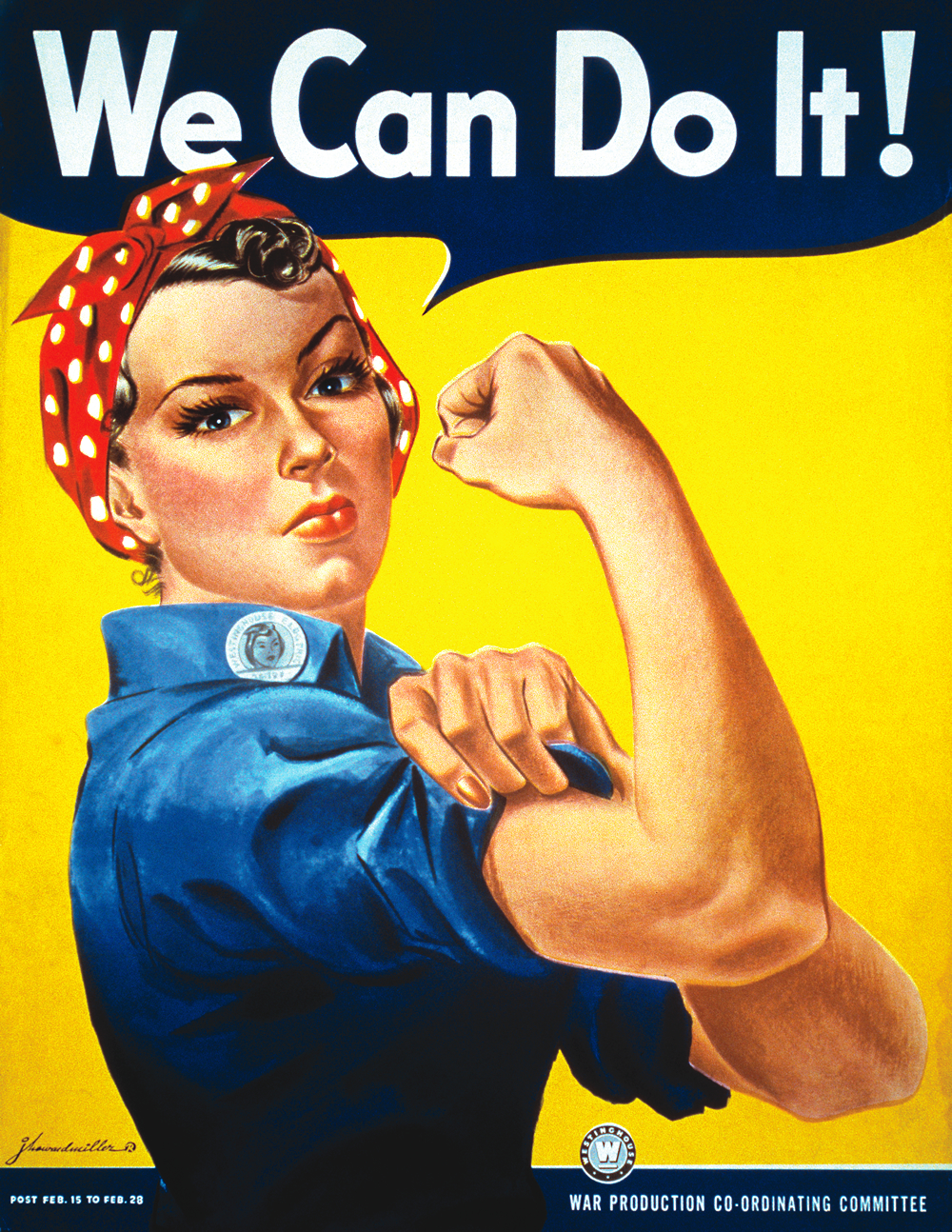First of all, Mrs. Eloise Ellis here is awesome.
 |
Mrs. Eloise J. Ellis has been appointed by civil service to be senior supervisor in the Assembly and Repairs Department at the Naval Air Base, Corpus Christi, Texas. She buoys up feminine morale in her department by arranging suitable living conditions for out-of-state employees and by helping them with their personal problems. Library of Congress. |
It's also about sex. These photos represent real-life "Rosie the Riveters." This vision of "Rosie the Riveter" on the left below (I know this isn't technically her) has become more iconic than Norman Rockwell's original "Rosie" character on the right. Both depict women transgressing gender norms -- work shirts, muscles, self-assured gazes -- but Rosie on the left retains the trappings of femininity. To rephrase it, she's the (conventionally) hot one. Shiny hair, shiny nails, shiny lips, strong without looking like Popeye. Left-side Rosie's power comes as much from her "traditionally" feminine, sexy physical presense as from her flexed muscle and determined look; Right-side's comes from her rivet gun, massive forearms, and meaty sandwich. Both play on a sense of novelty, even irony, but Rockwell's portrait remains more comfortable with the tough, transgressive realities of women in wartime production.
Here's a selection of some more photos in the collection that represent an amazing spectrum of visions, constructions, and realities of femininity. How do their subjects' appearance and interaction with their environments affect your perceptions?
 |
| [WHOA] |
Lastly, the caption on this next one captures the enduring sense of novelty surrounding women factory workers in heavy industry: Girl inspector confers with a worker as she makes a a careful check of center wings for C-47 transport planes, Douglas Aircraft Company, Long Beach, Calif.
Plus, check out that body language.











Those really are fantastic photographs.
ReplyDelete